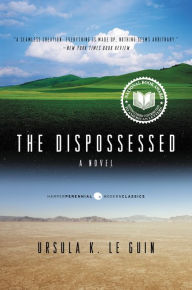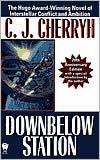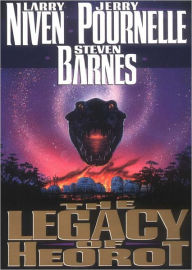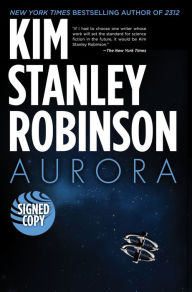Visiting Tau Ceti with 4 Science Fiction Authors
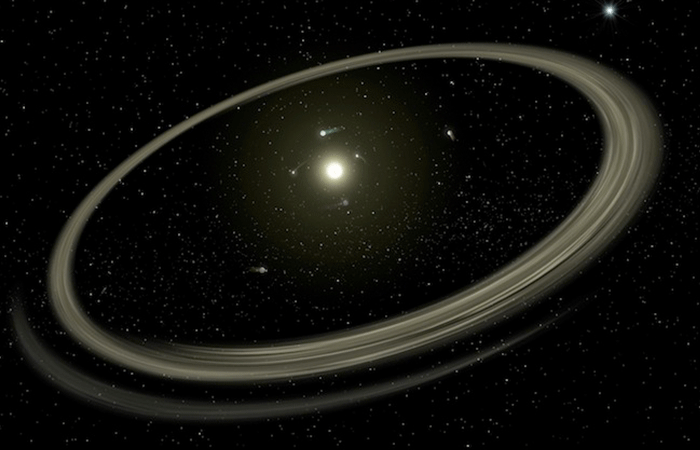 In Kim Stanley Robinson’s new novel Aurora, a generation ship makes its way to the titular new world, a moon orbiting one of the planets in Tau Ceti’s system. With this novel, Robinson is exploring new territory (what shape would a generation ship really be on by journey’s end?) and old: just 12 light years away, Tau Ceti is one of Earth’s closest neighbors, and it has been a frequent stop for science fiction authors.
In Kim Stanley Robinson’s new novel Aurora, a generation ship makes its way to the titular new world, a moon orbiting one of the planets in Tau Ceti’s system. With this novel, Robinson is exploring new territory (what shape would a generation ship really be on by journey’s end?) and old: just 12 light years away, Tau Ceti is one of Earth’s closest neighbors, and it has been a frequent stop for science fiction authors.
Why do so many authors set books within this so-close-yet-so-far galactic locale? We asked several of them to explain Tau Ceti’s gravitational pull.
The Dispossessed (Hainish Series)
The Dispossessed (Hainish Series)
In Stock Online
Paperback
$16.49
$17.99
The Dispossessed, by Ursula K. Le Guin
Ursula K. Le Guin visits the star in her Hugo-winning political thought experiment, set on the moon and planet system of Urras and Anarres.
In some of my early SF stories or novels, I breezily mentioned the Cetians, or the Hairy Cetians. Tau Ceti being a fairly familiar star name, “Cetian” didn’t have to be explained as Those Who Come from the Tau Ceti Solar System.
She noted that she didn’t know many specifics about the star, except that it is relatively close to Earth, and it is similar to our own sun, and therefore more likely to have its own planetary system that would support life (life being key for most any story, let alone sci-fi).
The Dispossessed, by Ursula K. Le Guin
Ursula K. Le Guin visits the star in her Hugo-winning political thought experiment, set on the moon and planet system of Urras and Anarres.
In some of my early SF stories or novels, I breezily mentioned the Cetians, or the Hairy Cetians. Tau Ceti being a fairly familiar star name, “Cetian” didn’t have to be explained as Those Who Come from the Tau Ceti Solar System.
She noted that she didn’t know many specifics about the star, except that it is relatively close to Earth, and it is similar to our own sun, and therefore more likely to have its own planetary system that would support life (life being key for most any story, let alone sci-fi).
Downbelow Station (Company Wars Series)
Downbelow Station (Company Wars Series)
Paperback
$7.48
$7.99
Downbelow Station, by C.J. Cherryh
C.J. Cherryh took a different approach: in Downbelow Station, Tau Ceti is the home to Pell Station, which orbits Downbelow, one of the system’s planets. It’s part of a much larger human civilization that has pushed out into the galaxy, and met Downbelow’s native race, the Downers. She used Tau Ceti because it was close, but also because she was able to study the planet directly, using a computer to track its location in the night sky:
Star mapping has been one of my hobbies: back in the day of Atari computing, I used a 48K machine and a lot of disks and tractor feed paper to work out the three-dimensional position of every star in the sun’s neighborhood, up to 40 light years. I then converted this to a model, in sheets of glass with sticky dots, so I could see it in 3-d display (before computer modeling made this easier)—and I plotted the route we might take to the stars, by hopping some red dwarf systems and developing mining stations and trade, leading ultimately toward UV Ceti, but bypassing that rather dangerous star in favor of its much nicer near neighbor Tau Ceti, as Pell’s star, postulating planets.
I also used Ep. Eri. (Viking) as a major mining post, and certain other specific stars as part of my universe, then worked out the number of ships and schedule of ship calls it would take to make it work. This is the background of the Alliance-Union universe. I found that the stars existed in ‘threads,’ and that there were structures in the closeup diagram of position, and was later delighted to see galactic mapping turning up some of the same patterns (on a far grander scale) that I was curious about in my little Atari project. On that schedule of ships, it was some time before the development of FTL, and Tau Ceti is the closest star that bypasses what I made the Centauri stars—site of a first, but failed attempt at a star station.
Downbelow Station, by C.J. Cherryh
C.J. Cherryh took a different approach: in Downbelow Station, Tau Ceti is the home to Pell Station, which orbits Downbelow, one of the system’s planets. It’s part of a much larger human civilization that has pushed out into the galaxy, and met Downbelow’s native race, the Downers. She used Tau Ceti because it was close, but also because she was able to study the planet directly, using a computer to track its location in the night sky:
Star mapping has been one of my hobbies: back in the day of Atari computing, I used a 48K machine and a lot of disks and tractor feed paper to work out the three-dimensional position of every star in the sun’s neighborhood, up to 40 light years. I then converted this to a model, in sheets of glass with sticky dots, so I could see it in 3-d display (before computer modeling made this easier)—and I plotted the route we might take to the stars, by hopping some red dwarf systems and developing mining stations and trade, leading ultimately toward UV Ceti, but bypassing that rather dangerous star in favor of its much nicer near neighbor Tau Ceti, as Pell’s star, postulating planets.
I also used Ep. Eri. (Viking) as a major mining post, and certain other specific stars as part of my universe, then worked out the number of ships and schedule of ship calls it would take to make it work. This is the background of the Alliance-Union universe. I found that the stars existed in ‘threads,’ and that there were structures in the closeup diagram of position, and was later delighted to see galactic mapping turning up some of the same patterns (on a far grander scale) that I was curious about in my little Atari project. On that schedule of ships, it was some time before the development of FTL, and Tau Ceti is the closest star that bypasses what I made the Centauri stars—site of a first, but failed attempt at a star station.
The Legacy of Heorot
The Legacy of Heorot
By Larry Niven
Audio CD $32.95
The Legacy of Heorot, by Larry Niven, Steven Barnes, and Jerry Pournelle
Larry Niven took on a similar approach: he “used a cube full of colored beads, with a printed guide, showing stars around Sol,” he said. “My nearest planets come from that.” The cube, created by Don Simpson, was a visual Niven used for books such as A Gift From Earth, one of his Known Space novels, in which a colony planet named Plateau exists under harsh, authoritarian rule. The system also features in another book, The Legacy of Heorot (co-written by Steven Barnes and Jerry Pournelle), in which a generation ship heads to Avalon to found a new colony.
Why choose Tau Ceti? Location, location, location: “Tau Ceti is close to Sol, and it’s close to being a Sol type star,” he said.” For all of the time I’ve been writing about it, there’s been no reason to think it doesn’t have planets. That made it a righteous site for stories.”
The Legacy of Heorot, by Larry Niven, Steven Barnes, and Jerry Pournelle
Larry Niven took on a similar approach: he “used a cube full of colored beads, with a printed guide, showing stars around Sol,” he said. “My nearest planets come from that.” The cube, created by Don Simpson, was a visual Niven used for books such as A Gift From Earth, one of his Known Space novels, in which a colony planet named Plateau exists under harsh, authoritarian rule. The system also features in another book, The Legacy of Heorot (co-written by Steven Barnes and Jerry Pournelle), in which a generation ship heads to Avalon to found a new colony.
Why choose Tau Ceti? Location, location, location: “Tau Ceti is close to Sol, and it’s close to being a Sol type star,” he said.” For all of the time I’ve been writing about it, there’s been no reason to think it doesn’t have planets. That made it a righteous site for stories.”
Aurora (Signed Book)
Aurora (Signed Book)
Hardcover
$17.78
$26.00
Aurora, Kim Stanley Robinson
Finally, in selecting Tau Ceti as a major setting in Aurora, Kim Stanley Robinson drew on more recent knowledge about star system anatomy. As satellites such as Kepler have definitively proven that other planets exist in our galaxy, we’ve also been learning just how different (and strange) they can be.
I wanted to tell the story of a starship expedition to a nearby star, and Tau Ceti is one of the closest stars, and is known to have several planets orbiting it. These planets that we know of are too massive for comfortable human occupation, but I asked astronomer friends if there could be Earth-sized moons orbiting these ‘large Earth/small Neptune’ planets they have found, and they said that this would be quite possible, as we couldn’t distinguish such a moon mass from the bigger mass it was orbiting, given our instrumentation at this time. So I made up these Earth-sized moons of planets that are definitely there.
Other authors have also visited Tau Ceti—as early as 1949, L. Sprauge de Camp stopped by in The Queen of Zamba; authors such as Isaac Asimov, Robert Heinlein, Frank Herbert, Samuel R. Delany, Dan Simmons, and Arthur C. Clarke have also stopped by our nearest celestial neighbor. If humanity is ever going to reach the stars, Tau Ceti is likely to be the first we head toward. It’s no wonder so many sci-fi writers have already imagined the journey.
Aurora, Kim Stanley Robinson
Finally, in selecting Tau Ceti as a major setting in Aurora, Kim Stanley Robinson drew on more recent knowledge about star system anatomy. As satellites such as Kepler have definitively proven that other planets exist in our galaxy, we’ve also been learning just how different (and strange) they can be.
I wanted to tell the story of a starship expedition to a nearby star, and Tau Ceti is one of the closest stars, and is known to have several planets orbiting it. These planets that we know of are too massive for comfortable human occupation, but I asked astronomer friends if there could be Earth-sized moons orbiting these ‘large Earth/small Neptune’ planets they have found, and they said that this would be quite possible, as we couldn’t distinguish such a moon mass from the bigger mass it was orbiting, given our instrumentation at this time. So I made up these Earth-sized moons of planets that are definitely there.
Other authors have also visited Tau Ceti—as early as 1949, L. Sprauge de Camp stopped by in The Queen of Zamba; authors such as Isaac Asimov, Robert Heinlein, Frank Herbert, Samuel R. Delany, Dan Simmons, and Arthur C. Clarke have also stopped by our nearest celestial neighbor. If humanity is ever going to reach the stars, Tau Ceti is likely to be the first we head toward. It’s no wonder so many sci-fi writers have already imagined the journey.
